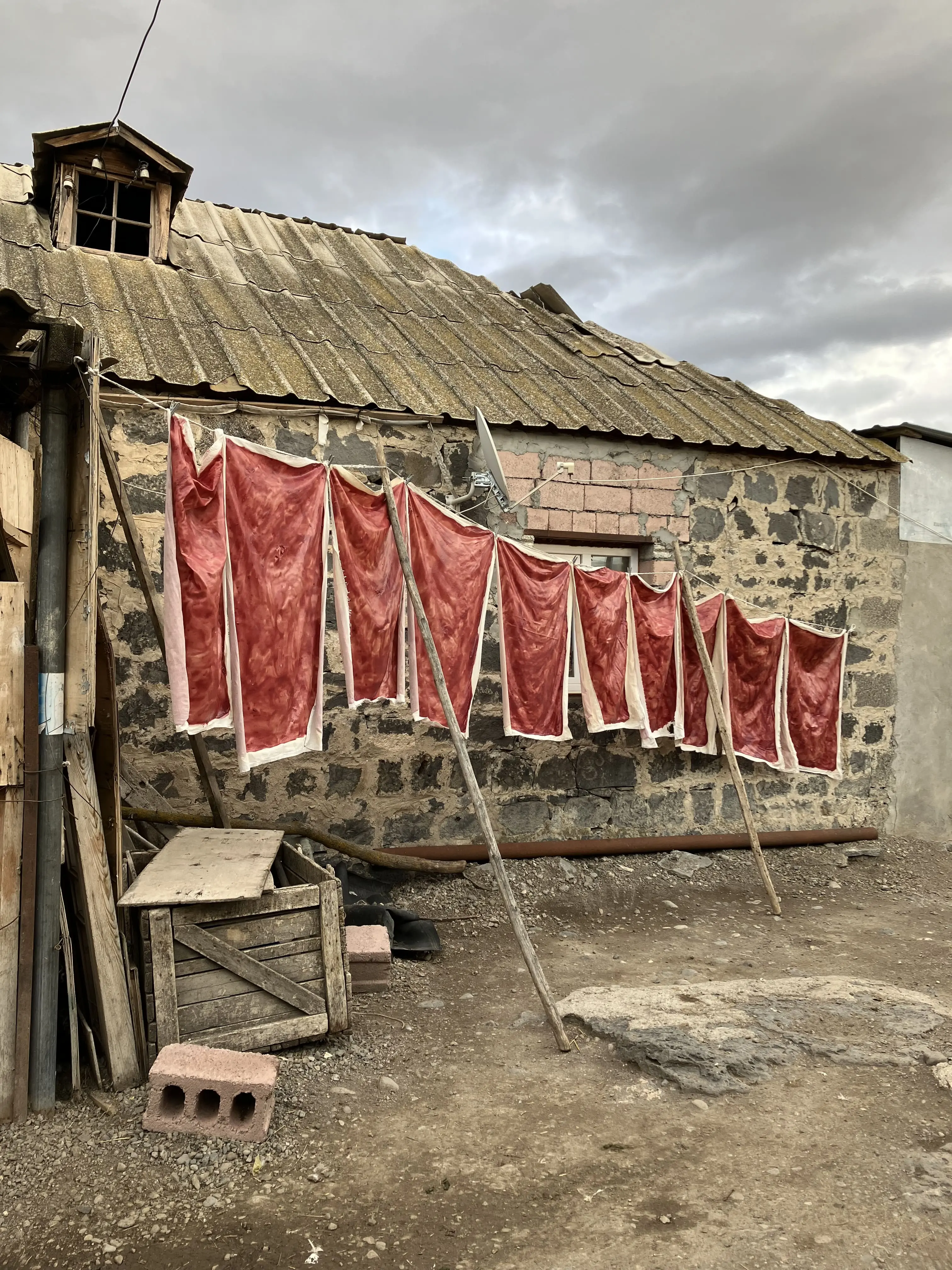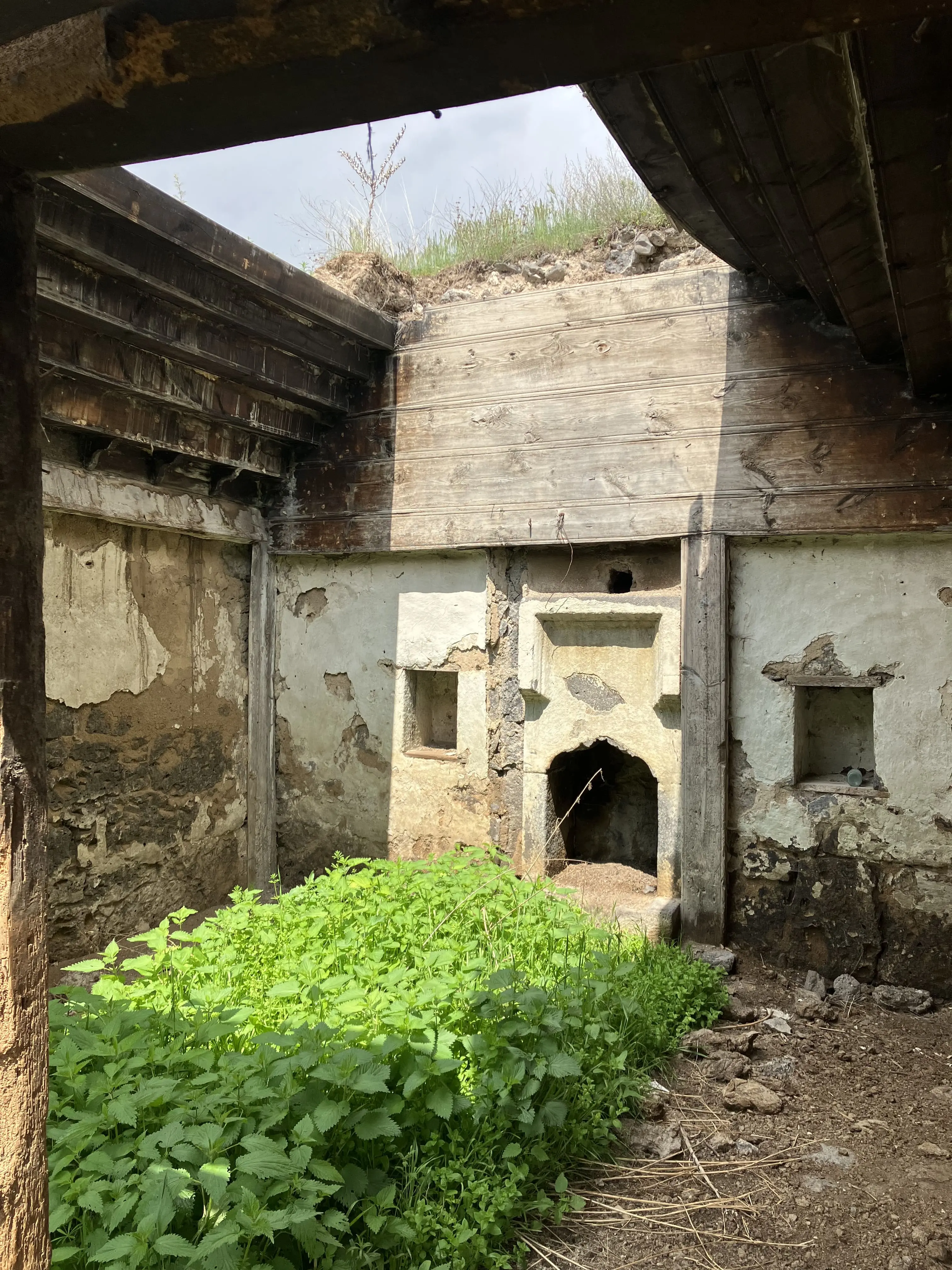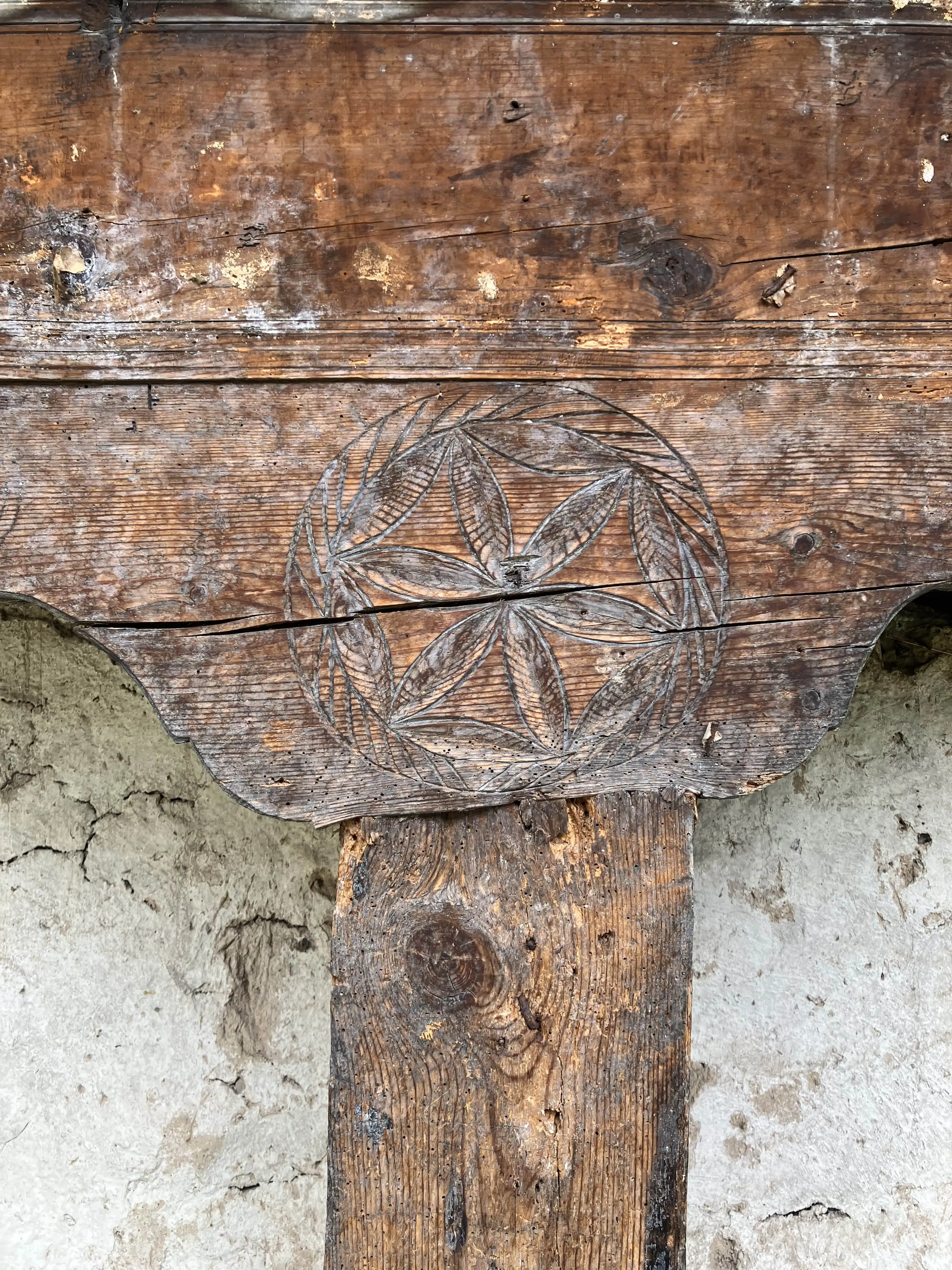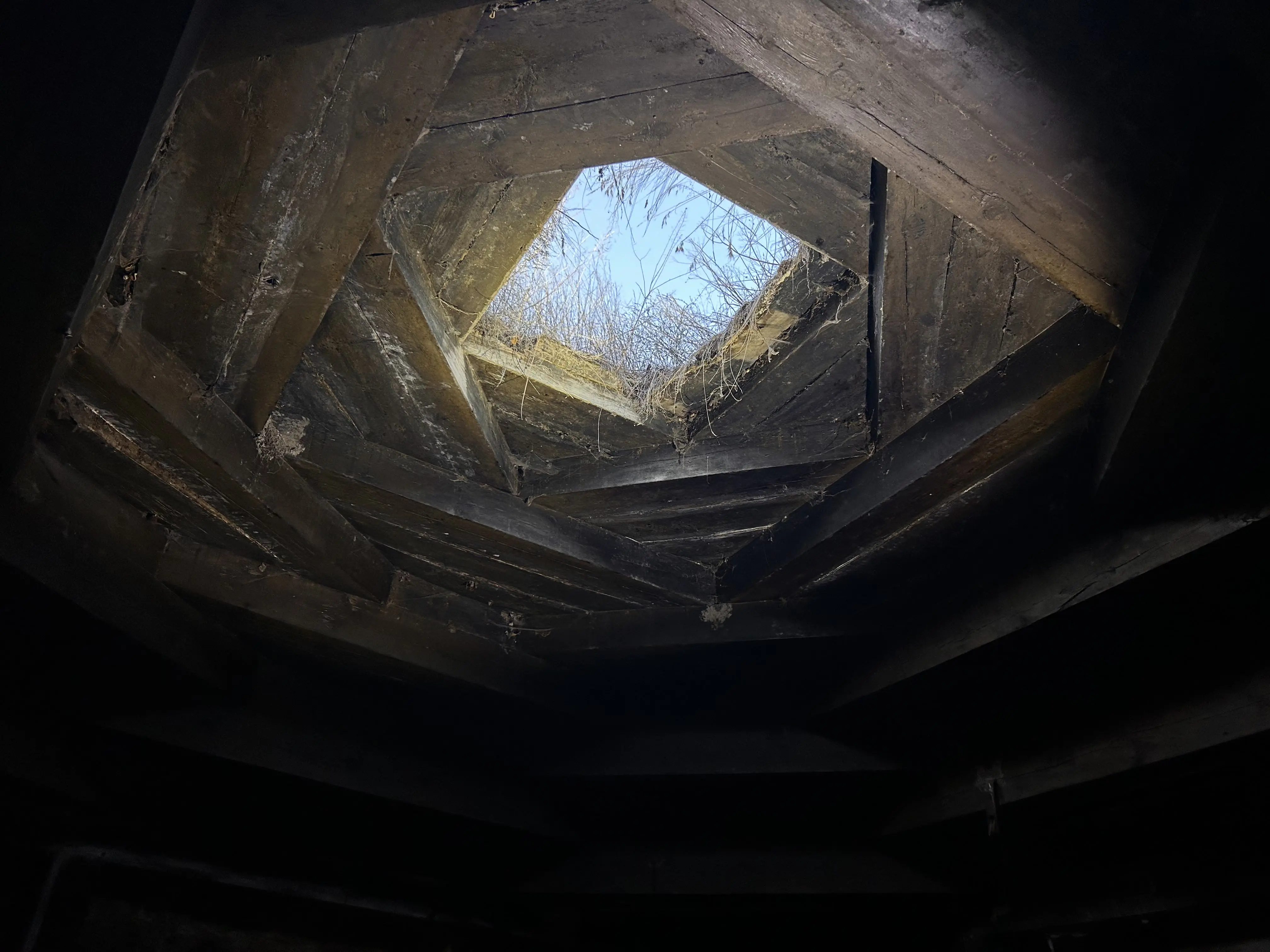Most prominent of the remaining rooms is an almost palatial centralized Darbazi hall–created from a refined set of logs that make up a Gvirgvini with 8 layers. Architecturally, this Gvirgvini starts as an octagonal form, rotating and tapering upward, while the last 3 layers change to a rectangular form to close the roof. This system rests on a set of horizontal beams running parallel to the walls, which are supported by 11 wooden columns–8 of which are pushed to the edges of the space, with three free-standing. As is typical of Darbazi in this region, the columns are elevated on small stone footings to separate the end-grain of the wood from the moisture of the earthen floor.
Connected to this main chamber, and through a low, elegant, half-circle stone arch, is a space for the Furne–a traditional Meskhetian bread oven. Here, the traditional kada and layered pastries would be prepared and baked. Adjacent to the main chamber, but only accessible from another entrance of the complex, are the remains of a Takarebaiani Oda (თაკარებიანი ოდა)--primarily a space for sleeping. Unlike the centralized stepped roof crown of the Darbazi, the enclosure of the Takarebiani Oda is more of a linear, stepped, tapering roof structure with a slanted roof cap that is open on one end to allow light and ventilation in. As is typical in these rooms, a decorated fireplace denotes it as a space intended for comfortable habitation. The final roofed space in the complex is dangerous if impossible to ender due to collapsed walls and overgrown terrain–but its central Erdo (ერდო), visible from overhead, suggests a similarly centralized hall.



